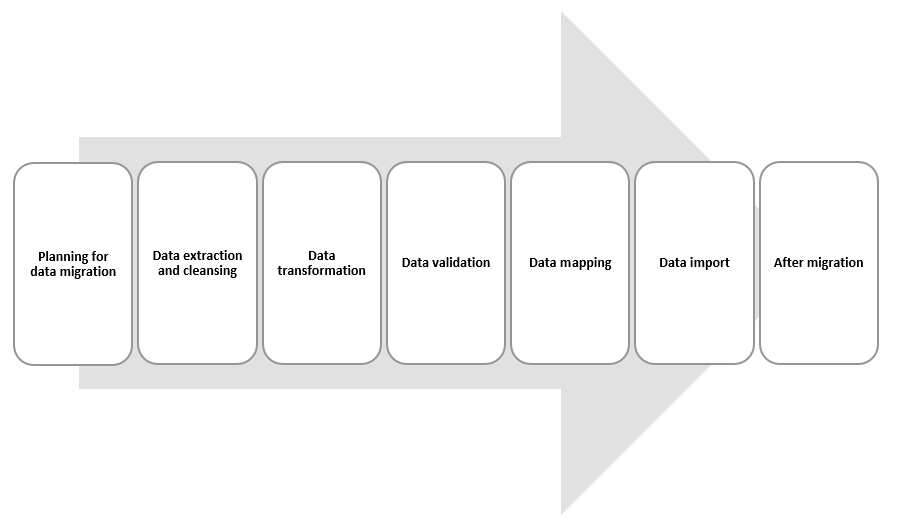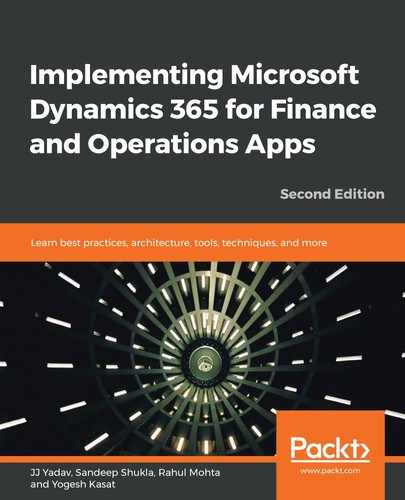Similar to configuration management, data migration is an important activity in any project. By data migration, we mean the data that you need to migrate from the legacy system, such as master data and opening balances. Data is needed for any kind of task and has multiple attributes. Hence, to ensure that it is managed and utilized well, we need to employ a systematic approach.
In the context of implementing a Dynamics 365 solution, we are focusing on overall data management and would like to share a graphic for an end-to-end understanding of all the activities involved in planning for data:

The full suite of activities involved in data migration are as follows:
- Planning for data migration: This involves planning the scope, tools, techniques, volume, and environment.
- Data extraction and cleansing: A data extraction script should be created to extract the required data in the appropriate format. Often, the quality of the data in the legacy system is not very good, so attention should be given to cleanse the extracted data.
- Data transformation: Applying appropriate transformation logic to prepare the data for its final import into Dynamics 365 for Finance and Operations.
- Data validation: Maintain a checklist of validation criteria for the business for extracted data.
- Data mapping: This mapping is per entity level; for example, the customer entity can span account-related information, contacts, and addresses. You must ensure that you have found a home for entity information so that it can be exchanged at the field level, including any transformation needs on the data.
- Data import: Maintain a log of what data and which records have been extracted, cleaned, validated, and migrated.
- After migration: Always confirm with the business about data accuracy and completeness.
Data migration may just seem like a one-time activity of moving data from the source to the Dynamics 365 Finance and Operations, but it goes through the same lifecycle as that of any other requirements in a project. Planning for data migration is a must in order for us to be able to systematically identify and execute a number of activities spread over time with multiple stakeholders. It also eases out potential unknowns and makes it easier to know what to expect next.
To be successful, involve business users and data experts right from the start of the project. Based on the size, complexity, and nature of the customer business, you may also need to include a data governance strategy in data migration planning.
